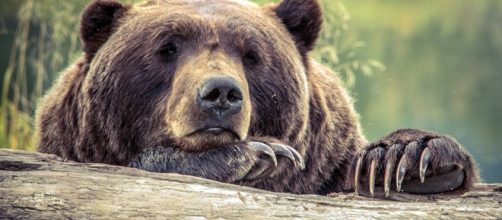Federal protection for the Grizzly Bears in Yellowstone is withdrawn, and the provisions of the Endangered Species Act will no longer apply to them. They have been protected for more than four decades, and the decision is because their numbers have increased over the years and the trend is expected to continue. It is believed that they can survive on their own.
This has not gone down well with certain sections of people who feel that such an action would open the floodgates for hunters in the protected Yellowstone zone.
It also means that those who own pets and livestock need not hesitate to shoot down a grizzly if they consider it to be a threat to their animals
Why protection is still necessary
Los Angeles Times reports that grizzly bears are usually found in isolated ecosystems and protection is necessary for them so that they can grow and connect with locations where others bears are found. This is required to help sustain the species and is the opinion expressed by an expert on wildlife. He has pointed out that the recovery in Yellowstone is proof that it is possible to bring back an endangered species from the brink of extinction provided necessary action is taken in time. Hence, if the protection is withdrawn all the efforts to save the species will go waste.
Another expert has come up with some statistics - the number of these animals in Yellowstone is presently in the region of 700 but, in 1975, it was slightly more than 100, and the increase can be attributed to the restrictions and protections that were introduced under the Endangered Species Act. These animals multiply at a slow rate, and it took a considerable amount of time for their population to increase to the current level.
What will be the fate of these grizzlies?
The population of grizzly bears used to be in thousands in the early nineteenth century, but with the growth of urbanization and expansion of cities and towns, their numbers have declined drastically. They had fallen to the greed of the vested interests of trophy hunters before the Endangered Species Act came to their rescue.
The situation has certainly improved in Yellowstone but the time has not yet come for hunting season to start. The population needs to increase and become more genetically diverse. That will be possible only when the density of population is allowed to expand, and the animals can connect with other isolated bear populations.
However, they seldom travel long distances and the process will be a lengthy one. It will need patience provided trophy hunters are kept at bay. They have selfish motives and are least bothered about the dwindling population of species like the grizzly bears. Who knows – a time may come in future when protection may have to be reintroduced.


